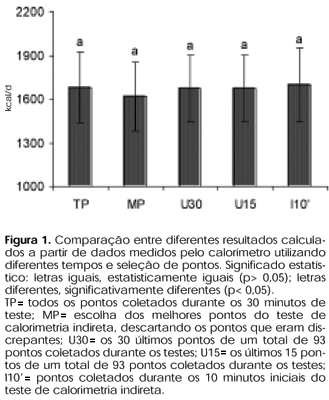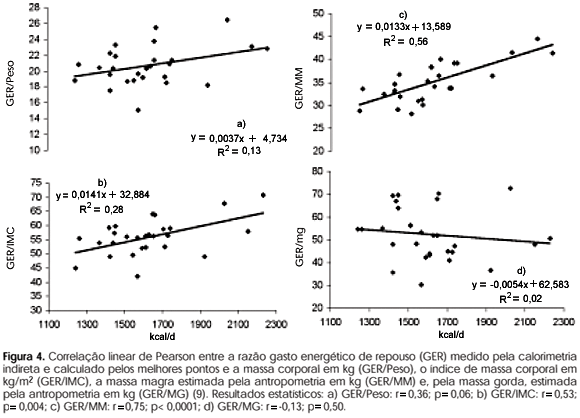OBJECTIVES: To compare the resting energy expenditure (REE, kcal/d) measured to the disposable equation of literature and to associate this to body composition. METHODS: Twenty-eight sedentary women were volunteers [weight: 79 ± 12 kg; stature: 164 ± 5 cm; age: 36 ± 11 years; body mass index (BMI, kg/m²): 29 ± 4]. The body composition was estimated with anthropometry methods; REE was measured by indirect calorimetry and was estimated by the main equations of the literature. Equations were developed to estimate REE and the best of them was REE-Our. RESULTS: The different time of harvest produced a similar result to REE measured. The Harris & Benedict, FAO/WHO/UNO only weight, and weight plus height, Schofield and REE-Our equations results were statistically similar to REE measured. The Siervo & Falconi, Schofield and Henry & Rees equations did not have correlation with the measured calorimetry. The best-isolated predictor of the REE was the body mass and the best association when adjusted to unit (kg) was lean body mass. The equation developed in the present work was: REE(kcal/d)= 21837 - 14,448 * Weight(kg) + 54,963 * Lean Mass(kg) - 9,341 * Stature(cm) - 4,349 * Age(years) - 19753 * Body Density(g/ml). CONCLUSION: The REE prediction equations can prompt to errors and seem to be population specific. The best prediction result was with the equation developed with anthropometrics variables of the volunteers (measured= 1617 ± 237 kcal/d; REE-Our= 1616 ± 167 kcal/d).
Calorimetry; Lean body mass; Fat body mass; BMI; Anthropometry









